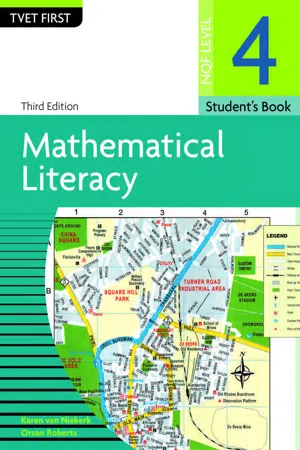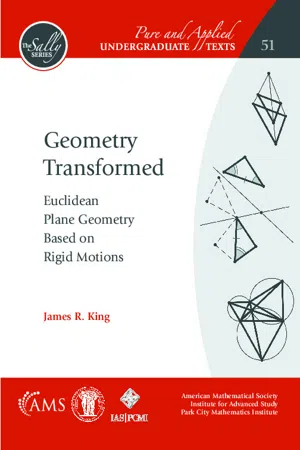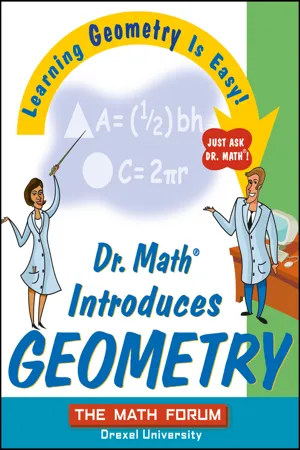Mathematics
Area of Rhombus
The area of a rhombus is calculated using the formula A = (d1 * d2) / 2, where d1 and d2 are the lengths of the diagonals. This formula represents the product of the diagonals divided by 2. The area of a rhombus can also be found using the formula A = base * height, where the base and height are perpendicular to each other.
Written by Perlego with AI-assistance
Related key terms
1 of 5
11 Key excerpts on "Area of Rhombus"
- eBook - PDF
- Alberto D. Yazon(Author)
- 2019(Publication Date)
- Society Publishing(Publisher)
A rhombus is every so often called as a diamond or in the shape of a diamond. The total distance which is traveled end to end to the border of a rhombus is the perimeter of a rhombus. The rhombus can also be called a square because it fulfills all of the requirements or properties the same as compared to a rhombus has. Rhombus has: • All sides of equal length; • Opposite sides have to be parallel; • The altitude is a distance at right angles to two sides; • The diagonals of a rhombus bisect each other at 90 ° . The perimeter of a rhombus is given as: P = 4×a 4.9.2. Area of a Rhombus Formula With the similarity of the diamond, a rhombus is a flat figure which is having the four same straight sides. All of the sides of the rhombus, which is having the same length, opposite sides are parallel to each other, and opposite angles are equal. Another name for rhombus is an equilateral quadrilateral, means that all of its sides are equal in length. A rhombus is in the shape of a slanting square. The area of the rhombus is half the product of the diagonals (Figure 4.20). Perimeter and Area 93 Figure 4.20: Area of the rhombus. The area of a Rhombus formula is: 4 × area of ∆ AOB = 4 × 12 × AO × OB sq. units = 4 × 12 × 12 d 1 × 12 d 2 sq. units = 4 × 18 d 1 × d 2 square units = 12 × d 1 × d 2 In this way, where, Area of a Rhombus = A = 12 × d 1 × d 2 (d 1 and d 2 are the diagonals of the rhombus). 4.10. SQUARE 4.10.1. Area of Square Area of a square is explained as the number of square units which is required to entirely fill a square. Generally, the area is explained as the region which is occupied inside the boundary of a flat object or figure. The evaluation is taking place in the square units with the standard unit being square meters (m 2 ). For the evaluation or determination of the area, there are pre-defined formulas for squares, rectangles, circle, triangles, etc. (Figure 4.21). Introduction to Mathematical Literacy 94 Figure 4.21: Area of the square. - Alan Sultan, Alice F. Artzt(Authors)
- 2017(Publication Date)
- Routledge(Publisher)
defined as length times width, is so that it will be consistent with those examples where we can divide the rectangles up into unit squares.This business of defining area troubles many people. Area is the amount of space taken up by a figure. How can we define what this is? It is no different from defining a foot and then measuring length with a ruler that represents a foot. A measurement of 1 foot is an object created by human minds. We could just as well have defined a measurement of length to be the distance from the tip of your nose to your bellybutton, called that a “bod,” and then measured how many bods there are in, say, a mile. The definitions we use for area, length, temperature, and so on are totally constructed by human beings. By establishing standard measures, we are able to make sense of what we observe.Having made the definition of the area of a rectangle as length times width, we can now easily derive the formulas for areas of other figures. Yes, we did say derive . It is quite remarkable that we can go from one figure to the next and find their areas, all from the area of a rectangle. What is especially nice is that, in doing so, we will see a direct interplay between algebra and geometry. The first few results are routine and will be gone through quickly, but soon some surprising results will emerge.Theorem 4.1 The area, A, of a right triangle with legs a and b, is given byA =.1 2a bProof . Start with right triangle ABD- No longer available |Learn more
- Daniel C. Alexander, Geralyn M. Koeberlein, , , Daniel C. Alexander, Geralyn M. Koeberlein(Authors)
- 2014(Publication Date)
- Cengage Learning EMEA(Publisher)
THEOREM 8.2.4 The area of any quadrilateral with perpendicular diagonals of lengths and is given by A 1 2 d 1 d 2 d 2 d 1 C B D d 2 d 1 E (a) A C A B T V S R D d 2 d 1 E (b) 1 d 2 d P N M Q R V S R T Figure 8.24 Figure 8.25 Figure 8.26 Figure 8.27 COROLLARY 8.2.5 The area A of a rhombus whose diagonals have lengths and is given by A 1 2 d 1 d 2 d 2 d 1 Example 6 illustrates Corollary 8.2.5. EXAMPLE 6 Find the area of the rhombus MNPQ in Figure 8.26 if and . SOLUTION Applying Corollary 8.2.5, In problems involving the rhombus, we often utilize the fact that its diagonals are perpendicular bisectors of each other. If the length of a side and the length of either diagonal are known, the length of the other diagonal can be found by applying the Pythagorean Theorem. AREA OF A KITE For a kite, we proved in Exercise 27 of Section 4.2 that one diagonal is the perpendicular bisector of the other. See Figure 8.27. A MNPQ 1 2 d 1 d 2 1 2 12 16 96 units 2 NQ 16 MP 12 Copyright 2013 Cengage Learning. All Rights Reserved. May not be copied, scanned, or duplicated, in whole or in part. Due to electronic rights, some third party content may be suppressed from the eBook and/or eChapter(s). Editorial review has deemed that any suppressed content does not materially affect the overall learning experience. Cengage Learning reserves the right to remove additional content at any time if subsequent rights restrictions require it. We apply Corollary 8.2.6 in Example 7. EXAMPLE 7 Find the length of in Figure 8.28 if the area of the kite RSTV is 360 in and SOLUTION becomes , in which d is the length of the remaining diagonal . Then , which means that . Then AREAS OF SIMILAR POLYGONS The following theorem compares the areas of similar triangles. In Figure 8.29, we refer to the areas of the similar triangles as and . The triangle with area has sides of lengths , , and , and the triangle with area has sides of lengths , , and . - eBook - ePub
- Sandra Rush(Author)
- 2017(Publication Date)
- Research & Education Association(Publisher)
supplementary angles.Rhombus
If we add the condition that all four sides of a parallelogram are equal, then we have a rhombus. So a rhombus has all of the properties of a parallelogram plus the sides are equal.Thus, in the above figure of the rhombus, PQ = QR = RS = SP = s, and the perimeter can be written asLikewise, the area of the rhombus iswhere any of the sides can be used as the base, and the height drawn to each side is the same. The diagonals of a rhombus bisect each other (as they did for the parallelogram), but now they also are perpendicular to each other.Rectangle
If, instead of saying the four sides of the parallelogram are equal, we say that the four angles are equal, we have a rectangle, which is a parallelogram with four equal angles.Thus, in the figure of the rectangle above, ∠T= ∠U = ∠V= ∠W, and since the angles of a quadrilateral add up to 360°, each of the four angles is 90°, or a right angle.The opposite sides are equal, as in a parallelogram, but not all sides are equal (as they were in the rhombus). The perimeter is written as usual asBecause all the angles are right angles, all sides l (length) are perpendicular to sides w (width), so they take the place of the base and height, and the area of the rectangle isHINT
If we think of tiling a floor in a straight line, we get an idea of why area is length times width. Suppose we wanted to tile a room that is 12 feet by 10 feet in 1 -foot tiles. If you count the number of tiles needed, it would be 12 rows of 10 tiles (or 10 rows of 12 tiles), and that total is 120 tiles, each 1 foot square, which is the area of the floor: 120 square feet. - eBook - PDF
Mathematics for Elementary Teachers
A Contemporary Approach
- Gary L. Musser, Blake E. Peterson, William F. Burger(Authors)
- 2013(Publication Date)
- Wiley(Publisher)
D A B C 7 E 6 4 6 Figure 13.40 The area of the parallelogram is 6 4 24 ¥ = and the area of the triangle is 1 2 7 4 14 ¥ = for a total area of 38 square units. If the equation for the area of a trapezoid is used, the computation would be 1 2 6 13 4 2 19 38 ( ) + = = ¥ ¥ square units. ■ O A s B r Figure 13.41 Section 13.2 Length and Area 673 A rigorous verification of this formula cannot be done without calculus-level mathematics. However, areas of irregular two-dimensional regions can be approxi- mated by covering the region with a grid. Area of a Circle The area A of a circle with radius r is A r = p 2 . r Common Core – Grade 7 Know the formulas for the area and circumference of a circle and use them to solve problems; give an informal derivation of the relationship between the circumference and area of a circle. T H E O R E M 1 3 . 5 The dimensions of the “key” on a standard basketball court are shown in Figure 13.42 where the curve at the right is a semicircle. If you were given the task to paint the key prior to the lines being painted, how many square feet of area do you need to cover. 19 ft 12 ft Figure 13.42 SOLUTION This basketball key can be broken into a rectangle and a semicircle as shown in Figure 13.43. 19 ft 12 ft 6 ft Figure 13.43 The area of the rectangle is 12 19 228 2 ¥ = ft and the area of the semicircle is 1 2 2 6 18 56 5 2 p p ¥ ¥ = ≈ . ft for a total area of 284 5 2 . ft . ■ 674 Chapter 13 Measurement The Pythagorean Theorem The Pythagorean theorem, perhaps the most spectacular result in geometry, relates the lengths of the sides in a right triangle; the longest side is called the hypotenuse and the other two sides are called legs. Figure 13.44 shows a special instance of the Pythagorean theorem in an arrangement involving isosceles right triangles. - eBook - PDF
Mathematical Literacy NQF4 SB
TVET FIRST
- K van Niekerk O Roberts(Author)
- 2017(Publication Date)
- Macmillan(Publisher)
What height of window will he be able to reach? Unit 3.2 Solving area and perimeter problems Area is the amount of space that a closed shape covers. Area is measured in square units. Perimeter is the length all the way around a shape. So if you add the lengths of the sides together, you get the perimeter. In the special case of the circle, the perimeter is called the circumference. Working with formulae Substitute the values you are given into the formula. You can use the number 3,14 as an approximate value of π. But if you have a scientific calculator, use the π key, because it is more accurate. Remember Remember the following when you apply formulae: A = lb means A = l × b A = 1 __ 2 π r 2 means A = 1 __ 2 × π × r × r and so on. 2 m 1,3 m 78 Module 3 Topic 2: Space, shape and orientation The formulae for the area and perimeter of the square, rectangle, triangle, circle and semi-cricle follows. Square a Area: A = a 2 Perimeter = 4 a Rectangle b l A = lb Perimeter = 2 l + 2 b Triangle h a c b Area = 1 __ 2 base × height = 1 __ 2 bh Perimeter = a + b + c Circle r Area = π r 2 Circumference = 2π r Semi-circle r Area = 1 __ 2 π r 2 Circumference = π r + 2 r (Note: 2 r is the length of the flat side.) Example 3.2 Calculate: a) the area of this shape b) the perimeter of this shape. Solution The shape consists of a semi-circle and a rectangle. First, work out the length of the rectangle. This is equal to the diameter of the circle. Diameter = 2 × radius = 6 m 2 m 3 m Remember The units of area are always square units, but perimeter is the total length, so the units are not squared. 79 Module 3 Solving space, shape and orientation problems a) Area = area of semi-circle + area of rectangle = 1 __ 2 π r 2 + (length × breadth) = 26,14 cm 2 Remember, the perimeter is the length around the shape, so do not count the flat side of the semi-circle. - eBook - PDF
Geometry Transformed
Euclidean Plane Geometry Based on Rigid Motions
- James R. King(Author)
- 2021(Publication Date)
- American Mathematical Society(Publisher)
For computing the area of other shapes, there are two paths one can take. The most general path is to define area by filling up the shape as much as possible with small squares and adding up the areas of the small squares. Taking ever smaller squares gives a larger and more accurate approximation of the area, much as we did for squares with irrational sides above. Taking a limit will produce a value for the area, at least for familiar geometric shapes. The full development of this general approach requires technical arguments that would be distracting from the main thread of this book, so we will only touch on this approach a few times, assuming some statements without proof. Instead, we will take an older and geometrically more interesting approach, which is to cut shapes apart and re-assemble them into other shapes whose areas are known. Area of Rectangles. Shapes that can be assembled from squares, like the rectan-gle on the left in Figure 2, will have an area equal to the sum of the area of the squares, in this case 3×4 = 12 . If squares are subdivided into smaller squares, such as a division into 4 smaller congruent squares, then the small squares have an area of 1/4 for each small square. Since the shaded figure inside the rectangle on the right contains 24 such squares, it has an area of 6. If a rectangle has sides ? and ? that are rational, then by choosing common denominators, one can divide such rectangles into squares and get the formula that area equals ? × ? . Areas of Triangles and Parallelograms 163 Figure 2. Area of Rectangle and of Figure Built from Squares For the general case, a limit argument is not hard, but there are direct proofs using dissection and the area formula for a square. In Figure 3, a rectangle ? with sides ? and ? is placed in a rotationally symmetric way into a square with sides ? + ? . - No longer available |Learn more
- Tom Bassarear, Meg Moss(Authors)
- 2015(Publication Date)
- Cengage Learning EMEA(Publisher)
All Rights Reserved. May not be copied, scanned, or duplicated, in whole or in part. Due to electronic rights, some third party content may be suppressed from the eBook and/or eChapter(s). Editorial review has deemed that any suppressed content does not materially affect the overall learning experience. Cengage Learning reserves the right to remove additional content at any time if subsequent rights restrictions require it. Unless otherwise noted, all content on this page is © Cengage Learning Section 9.2 Perimeter and Area 529 When we step back and consider, we can see that the height is the radius of the circle. If we look at the base, the length of the base is equivalent to the width of eight sectors, but eight sectors is equivalent to half of the total distance around the circle, or 1 2 of the circumference. Since the circumference is 2 r , then half the circumference is r . The next figure shows this. π r r Therefore, since to find the area of a parallelogram we multiply base 3 height, the area of the figure is A 5 ( r )( r ) 5 r 2 HISTORY We know that the Egyptians and the Babylonians knew not only the formulas for the area of the square and the rectangle, but also the formula for the area of a trapezoid. They knew the formula for finding the area of a right triangle. There were correct and incorrect formulas for the areas of isosceles triangles. For example, there is an example in the Rhind papyrus (from ancient Egypt) of finding the area of an isosceles triangle by finding half the product of the base and the length of one of the equal sides, instead of the altitude. For the circle, the Babylonians developed the formula A 5 C 2 12 and the Egyptians developed the formula A = ( 8 9 d ) 2 . It will be left as an exercise to see how close their formulas were to the actual formula. INVESTIGATION 9.2e A 16-Inch Pizza versus an 8-Inch Pizza Let’s say you are going out to have pizza with several friends. - eBook - PDF
Dr. Math Introduces Geometry
Learning Geometry is Easy! Just ask Dr. Math!
- (Author)
- 2004(Publication Date)
- Jossey-Bass(Publisher)
So its length is a + b — 2 . We can also construct perpendicular lines from those midpoints to the bottom to construct small right triangles, as in this figure: If we rotate those right triangles up around the midpoints until they hit the side of the trapezoid, we end up with a rectangle. Areas and Perimeters of Two-Dimensional (2-D) Geometric Figures 83 84 Dr. Math Introduces Geometry R And if you look carefully, you’ll see that the length of the rectangle is a + b — 2 and the height is h, so the area is which is the same as the formula we’ve learned for the area of a trapezoid. —Dr. Math, The Math Forum esources on the Web Learn more about area and perimeter at these sites: Math Forum: An Informal Investigation of Area mathforum.org/workshops/sum98/participants/muenster/ Step-by-step activity exploring the area of an irregular shape. Math Forum: The Area of a Parallelogram mathforum.org/te/exchange/hosted/basden/llgramarea.html Students learn to calculate the area of a parallelogram. Math Forum: What Is Area? mathforum.org/alejandre/frisbie/student.one.inch.tiles.html Collaborative group activity comparing area and perimeter using Hands-On Math software by Ventura Educational Systems, but the ideas could be adapted to use with other software or a Java applet. Shodor Organization: Project Interactivate: Area Explorer shodor.org/interactivate/activities/perm/ Students are shown shapes on a grid after setting the perimeter and are asked to calculate the areas of the shapes. area of rectangle = a b h + ⋅ 2 Shodor Organization: Project Interactivate: Perimeter Explorer shodor.org/interactivate/activities/permarea/ Students are shown shapes on a grid after setting the area and are asked to calculate the perimeters of the shapes. Shodor Organization: Project Interactivate: Shape Explorer shodor.org/interactivate/activities/perimeter/ Students are shown shapes on a grid and are asked to calculate the areas and the perimeters of the shapes. - eBook - PDF
Introductory Mathematics
Concepts with Applications
- Charles P. McKeague(Author)
- 2013(Publication Date)
- XYZ Textbooks(Publisher)
Here are the most common geometric figures along with the formula for the area of each one. The only formulas that are new to us are the ones that accompany the parallelogram and the circle. ©iStockphoto.com/Fitzer 4 cm 2 cm 1 cm 2 1 cm 2 1 cm 2 1 cm 2 1 cm 2 1 cm 2 1 cm 2 1 cm 2 s Area = (side)(side) = (side) 2 = s 2 Square s Area = (length)(width) = lw Rectangle w l Area = (base)(height) = bh Parallelogram h b 399 8.2 Area EXAMPLE 1 The parallelogram below has a base of 5 centimeters and a height of 2 centimeters. Find the area. Solution If we apply our formula, we have Area = (base)(height) A = bh = 5 ⋅ 2 = 10 cm 2 Or, we could simply count the number of square centimeters it takes to cover the object. There are 8 complete squares and 4 half-squares, giving a total of 10 squares for an area of 10 square centimeters. Counting the squares in this manner helps us see why the formula for the area of a parallelogram is the product of the base and the height. To justify our formula in general, we simply rearrange the parts to form a rectangle. EXAMPLE 2 The triangle below has a base of 6 centimeters and a height of 3 centimeters. Find the area. Triangle h b Area A = (base)(height) = bh 1 2 1 2 Circle Area = π(radius) 2 A = πr 2 r Practice Problems 1. Find the area of the parallelogram in Example 1 if the base is 6 centimeters and the height is 2 centimeters? } 2 cm 5 cm Parallelogram Rectangle Move the triangle to right side. h b h b 2. Find the area of the triangle in Example 2 if the height is 4 centimeters and the base is 8 centimeters. Answers 1. 12 cm 2 2. 16 cm 2 3 cm 6 cm Chapter 8 Geometry 400 Solution If we apply our formula, we have Area = 1 __ 2 (base)(height) A = 1 __ 2 bh = 1 __ 2 ⋅ 6 ⋅ 3 = 9 cm 2 As was the case in Example 1, we can also count the number of square centimeters it takes to cover the triangle. There are 6 complete squares and 6 half-squares, giving a total of 9 squares for an area of 9 square centimeters. - eBook - PDF
- Tom Bassarear, Meg Moss(Authors)
- 2019(Publication Date)
- Cengage Learning EMEA(Publisher)
Most schools place perimeter of polygons and area of rectangles in third grade. Circumference and area of other figures, as well as surface area and volume, are learned in sixth and seventh grades. Eighth grade is where the Pythagorean theorem is first learned. We know that the Egyptians and the Babylonians knew not only the formulas for the area of the square and the rectangle, but also the formula for the area of a trapezoid. They knew the formula for finding the area of a right triangle. There were correct and incorrect formulas for the areas of isosceles triangles. For example, there is an example in the Rhind papyrus (from ancient Egypt) of finding the area of an isosceles triangle by finding half the product of the base and the length of one of the equal sides, instead of the altitude. For the circle, the Babylonians developed the formula 12 2 A C 5 , and the Egyptians developed the formula ( ) 8 9 2 A d 5 . It will be left as an exercise to see how close their formulas were to the actual formula. 532 CHAPTER 9 Geometry as Measurement n n Perimeter Let us begin with the concept of perimeter, essentially the distance around an object. Many practical applications of perimeter involve surrounding an object—for example, fencing a yard or running a baseboard around the base of a room. As explored in the first investigation, perime- ter of a rectangle (or any polygon) is the distance around the outside of a figure and therefore is measured in linear units. The sum of the lengths of the sides gives us the perimeter of a polygon. Now let’s learn about distances around circles. n n Circumference and When we determine the distances around figures and objects, sometimes the path is not a straight line but rather is a circle.
Index pages curate the most relevant extracts from our library of academic textbooks. They’ve been created using an in-house natural language model (NLM), each adding context and meaning to key research topics.










